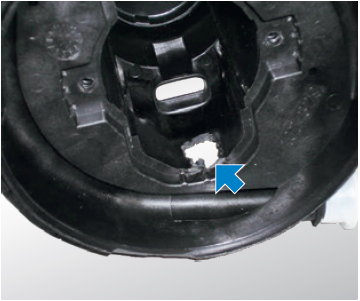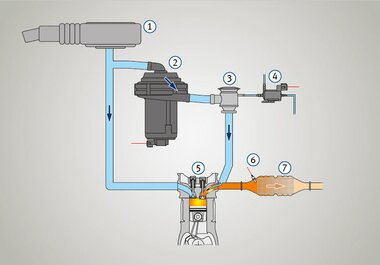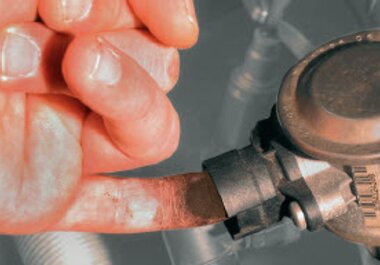
Failure of secondary air pump
due to jammed relay
Information on diagnostics
Secondary air pump not working after cold start? Is there a burnt smell from the engine compartment? Are the electric contacts of the secondary air pump charred? The secondary air pump may have failed due to overload. You can read about how this happens here.
Potential complaints:
- Secondary air pump does not start after a cold start
- The engine compartment smells charred
- Melting traces on the electrical contacts of the secondary air pump
- P0410 “Malfunction”
These conditions indicate that the secondary air pump has failed due to overload.
Possible causes:
The relay via which the secondary air pump is controlled is jammed. As a result, the secondary air pump was energised for an impermissibly long period of time. During a cold start, the secondary air pump may only be in operation for a maximum of 90 – 120 seconds. The secondary air pump is not designed for continuous use!
|
With cold vehicle engine (“cold start”): |
With warm vehicle engine: |
|
The secondary air pump has to start audibly after a cold start of the engine. |
Start vehicle engine. |
|
If the power supply of the secondary air pump is fine, but the secondary air pump runs with a scraping, whistling or scratching noise or not at all, the secondary air pump is to be replaced. |
Check electrical contacts of voltage supply to secondary air pump. |
|
We recommend replacing the relay as well. |
The relay is jammed if voltage is present at the secondary air pump. |
|
In such cases, all other secondary air system components should also be checked. |
Replace relay and secondary air pump. |
Checking
Identify the respective relay by means of the circuit diagram.
Final check
The secondary air pump has to run for about 90 – 120 seconds after a cold start of the engine.
1. Air filter
2.Throttle valve
3. Secondary air pump
4. Engine control unit
5. Relay of secondary air pump
6. Fuse of secondary air pump
7. Secondary air valve
8. Electric switchover valve
9. Lambda sensor
10. Catalytic converter
Fast facts: Secondary air system
A “rich mixture” (λ<1), i.e. a mixture with excess fuel, is required for cold start of a petrol engine. Thus, large amounts of carbon monoxide and unburned hydrocarbons are produced during cold start. To reduce the level of these pollutants, ambient air with a high oxygen content (secondary air) is injected into the exhaust manifold directly downstream of the exhaust valves during the cold start phase. This results in post-oxidation (afterburning) of the pollutants to form carbon dioxide and water.
The heat generated in this process additionally warms the catalytic converter and speeds up the start of Lambda control action.

